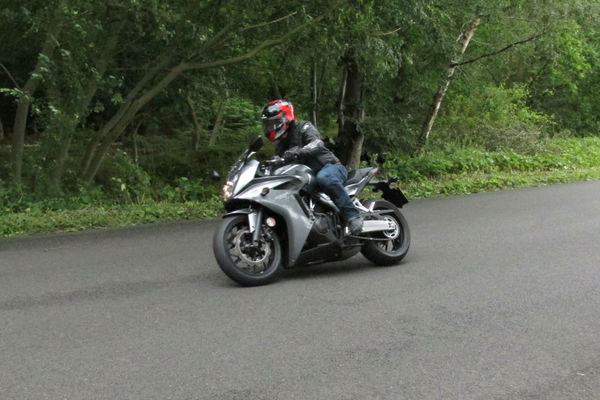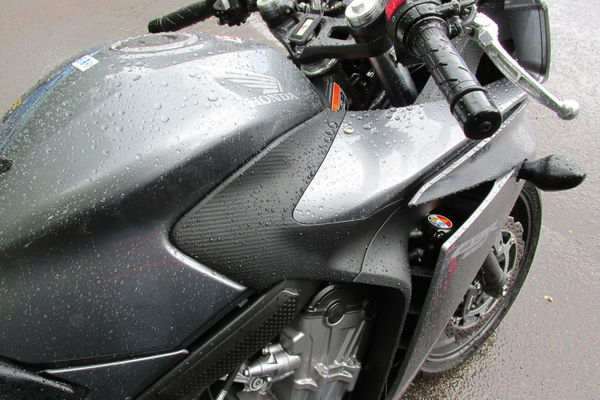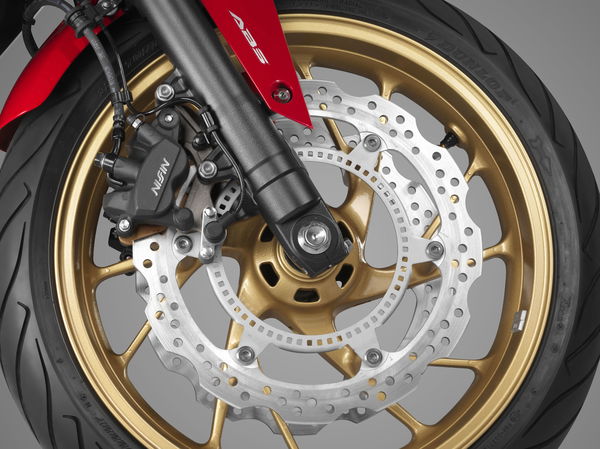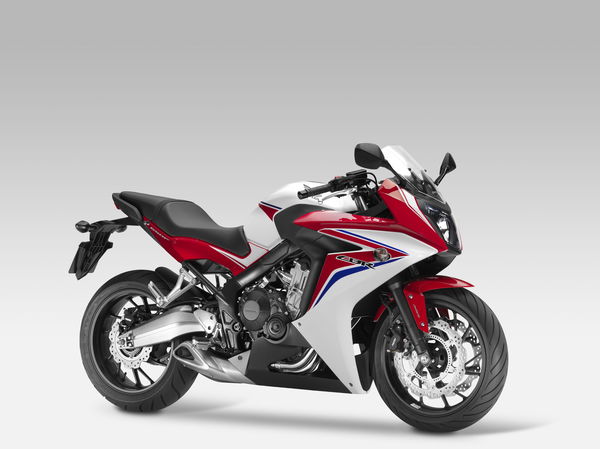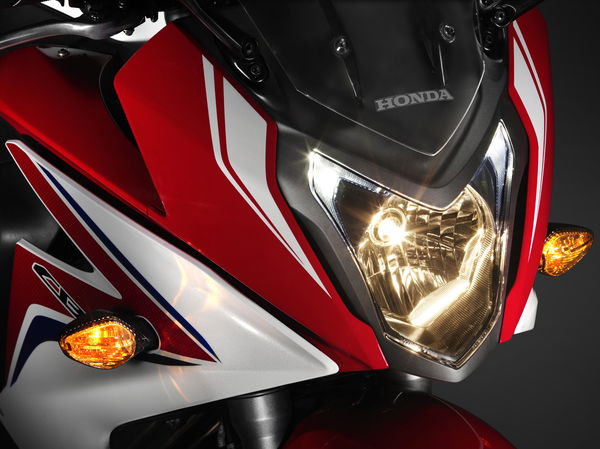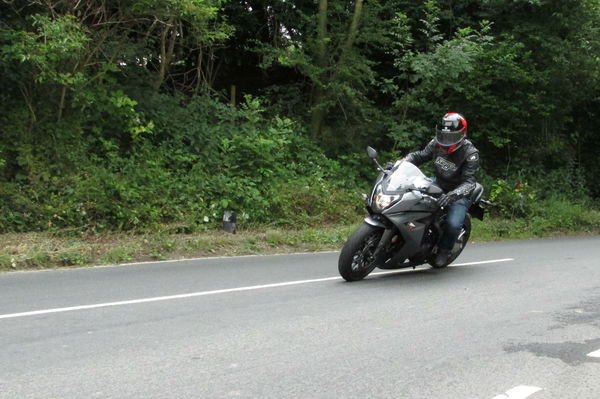UK road test: Honda CBR650F review
It might make slightly less power than its predecessor but dynos don't measure fun
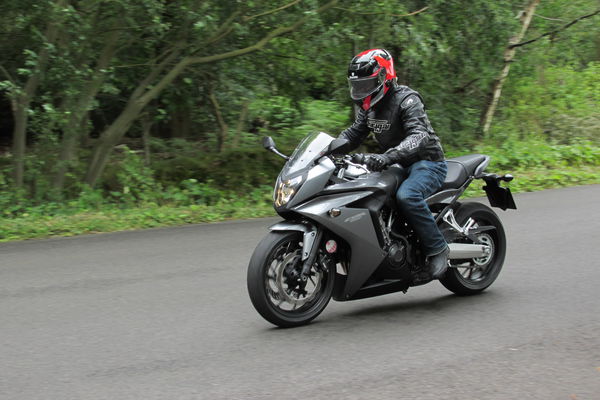

SOME bikes make you think: this is great. It will be even better when it's finished.
Not a Honda.
Hondas can be great but also consistently feel like the finished job. That's the immediate impression created by the CBR650F. There are no rough edges, nothing seems like it went wrong somewhere between conception and production. Love it or hate it, everything is as it was intended to be.
Like Honda's NC750 range, and all its sub-600cc models, the CBR650F is built in Thailand, and it's a positive reflection of that operation.
The clocks are shaped a bit like two dials, except they're not dials because they're digital. It's an effective nod to tradition which contributes to a good first impression. It's the same arrangement as found on the naked CB650F, which also shares the CBR's frame and 649cc inline-four engine, or 'platform'.
Unsurprisingly then, the CBR650F also closely shares the engine characteristics of its naked sibling. Low down, it wouldn't startle a mouse. This isn't an engine that will let you overtake in a blast of torque from any gear.
The power's just a low hum at around 3,000 or 4,000rpm. A hum which smoothly and steadily builds as the black LED bars of the rev counter climb. By 7,000rpm, it's a shout, and all sections of the choir join in as the bars climb to the 11,500rpm red line. The gearbox is melted butter-smooth as you work to keep it shouting.
Typically of revy engines with most of the power in the north, it encourages you to go north and find it whenever you're given enough road. But you won't find yourself almost immediately travelling at double the speed limit. The CBR has levels of power you can explore without scaring yourself and risking a prison sentence.
It feels fast, but that's not the point. It's involving and satisfying. Engaging.
The CB650F and CBR650F respectively replace the CB600F Hornet and CBR600F in Honda's range, but make 14hp less than their predecessors, at 87hp instead of 101hp. The CBF got a lukewarm reception from some quarters following its launch because of that. I don't suppose the same people will be any happier about the faired version.
I disagree with the detractors. It's obvious why Honda have trimmed power. The old models couldn't be restricted to 48hp for 'A2' licence holders because rules say eligible bikes must not have made more than double that to begin with. The new 650 models can be restricted. With new rider numbers plummeting following licence rule changes, manufacturers need to make such adaptations. We need them to as well, unless we're happy for motorcycles to gradually become a rarer sight, as sidecars have over the years.
There's another, better reason we should accept the CBR650F: This. Engine. Is. Fun. Unless you're playing Top Trumps, that's surely what matters.
The engine is exactly what it needs to be: civilised but still exciting, mild-mannered when you want it to be, with bite when you want that.
Everything else is exactly as it should be too. The suspension isn't super-sport-firm, but neither is it soft. It's firm enough to keep the CBR in shape over fast, bumpy bends, but pliant enough to commute to work on every day or ride to Kathmandu without getting a bad back. It's perfect for an all-rounder, which is what this bike does such a good job of being. As on the CB650F, the fork is non-adjustable while the shock has adjustable preload.
The standard ABS brakes are in the same vein. Ease the front lever in and speed reduces by degree, not with ferocious bite. There's plenty of bite available but it won't take you by surprise. You have to increase the pressure to find it.
The riding position is on the sporty perimeter of comfortable. The bars are raised clip-ons which sit atop the top yoke, not under it. It's totally different to the straight-barred CB650F, which feels like a street fighter, but not as sporty as, say, the new VFR800.
The seat is soft enough for distance, and consists of a single unit, so the pillion won't feel stranded on a perch.
As well as the basics like a fuel gauge, the clocks give you your average and current fuel consumption, a feature that also seems fairly standard these days. The two-button operation, 'select' and 'set', is reassuringly simple.
The bar switches are similar to those found across much of Honda's current range. There's a big grey horn button where you more commonly find the indicator switch. Some unintentional horn tooting is likely but it's a good arrangement once accustomed to it, with a nice, permanent feel.
Under the seat you'll find a cable-style helmet lock and space for disc lock, and there are four points to hook bungee cords on to.
I've got reservations about 'carbon effect' plastics but the bits on the CBR, including the inner fairing and panels either side of the tank, manage to look refined rather than tacky. The bars, top yokes and 41mm forks may not be beefy enough for some egos.
Nor would I usually expect to like metallic gunmetal silver, and no doubt some will find it too conservative, but it seems to work, looking sophisticated on the CBR. Whether it will look plain dull when the bike's a couple of years old remains to be seen. There's the red/white/blue colour scheme if you're worried, allthough that could be in danger of trying to look sportier than the CBR650F really is.
It's not a CBR-RR. It 's a CBR-F. A soft CBR, achieving perfectly what a soft CBR needs to. Honda lists it in its super sports range but it's better thought of as a sports tourer. That's how Yamaha describes the 600cc four-cylinder XJ6 Diversion F, which is probably the CBR650F's closest competitor.
At £6,999 on-the-road, the CBR is priced within spitting distance of the Diversion, which is £6,699 excluding registration fee and tax. The Yamaha is just as user-friendly with slightly less peak power and torque, at 77.5hp and 44lbft.
If Visordown had a five-star rating system, the CBR650F might get the maximum five except for one real complaint: the fairing-mounted mirrors are on arms too short, so you can't see what's directly behind you without moving your elbows. It's the kind of problem I expect on a bike made in the 1980s, not a Honda made in 2014.
So it's a theoretical four stars for the otherwise flaming good CBR650F.
Model tested: Honda CBR650F
Price: £6,999
Power: 87hp
Torque: 46.4lbft
Kerb weight: 211kg
Seat height: 810mm
Colours: Metallic silver, black, white/blue/red (Tricolour)
Availability: Now
